
Indoor Airflow, Air Quality and Energy Consumption of Buildings
To be comfortable, people require that environmental parameters (e.g. temperature, humidity, air velocity) are maintained within a fairly limited range. Equally, modern technology frequently requir…
- Edisi
- Ed. 1, Cet. 1
- ISBN/ISSN
- 90-9002435-2
- Deskripsi Fisik
- 145 hal.; ilus.; 16,5 x 24 cm.
- Judul Seri
- -
- No. Panggil
- 628.8 QIN i
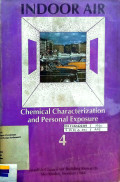
Indoor Air: Chemical Characterization and Personal Exposure Volume 4
Vol. 4: Chemical Characterization and Personal Exposure. Characterization of indoor gaseous pollutants, sources and emission rates, sampling and analytical methods; Indoor/outdoor relationships, i.…
- Edisi
- Ed. 1, Cet. 1
- ISBN/ISSN
- 91-540-4199-6
- Deskripsi Fisik
- 429 hal.; ilus.; 16,5 x 24,2 cm.
- Judul Seri
- -
- No. Panggil
- R 628 BER i

Indoor Air: Sensory and Hyperreactivity Reactions to Sick Buildings Volume 3
Vol. 3: Sensory and Hyperreactivity Reactions to Sick Buildings. Stockholm: Swedish Council for Building Research. Formaldehyde : Sources, exposures, measurements and health effects; Air ions andel…
- Edisi
- Ed. 1, Cet. 1
- ISBN/ISSN
- 91-540-4195-3
- Deskripsi Fisik
- 472 hal.; ilus.; 16,5 x 24,2 cm.
- Judul Seri
- -
- No. Panggil
- R 628 BER i
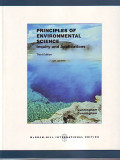
Principles of Environmental Science: Inquiry and Applications
Principles of Environmental Science: Inquiry and Applications provides a comprehensive overview of the fundamental concepts and methodologies in environmental science. This text emphasizes the impo…
- Edisi
- Ed. 3, Cet. 1
- ISBN/ISSN
- 0-07-111574-9
- Deskripsi Fisik
- xviii, 428 hal.; ilus.; 23 x 27,5 cm.
- Judul Seri
- -
- No. Panggil
- 570.5 CUN p
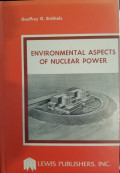
Environmental Aspects of Nuclear Power
The book Environmental Aspects of Nuclear Power by Geoffrey G. Eichholz investigates the environmental impacts of nuclear power generation and nuclear technology more broadly. Eichholz discusses re…
- Edisi
- Ed. 1, Cet. 3
- ISBN/ISSN
- 0-250-40138-X
- Deskripsi Fisik
- xx, 683 hal.; ilus.; 15,6 x 23,6 cm.; indeks.
- Judul Seri
- -
- No. Panggil
- 621.48 EIC e

Environmental Science: A Study of Interrelationships
Environment science is an interdisciplinary field. We must include both when seeking solutions to environmental problems because environmental disharmonies occur as a result of the interaction betw…
- Edisi
- Ed. 9, Cet. 10
- ISBN/ISSN
- 0-07-244000-7
- Deskripsi Fisik
- xxv, 476 hal.; ilus.; 23 x 27,5 cm.
- Judul Seri
- -
- No. Panggil
- 628 ENG e

Environmental Education
This is a guide to learning resources in the rapidly expanding field of environ- mental education. It is more than a bibliography or listing of materials, being rather an annotated compilation of s…
- Edisi
- Ed. 1, Cet. 1
- ISBN/ISSN
- 0-810-3-13377-5
- Deskripsi Fisik
- xi, 225 hal.; 14 x 21,8 cm. indeks.
- Judul Seri
- -
- No. Panggil
- 507 STA e

Environmental Legislation & Administration in Indonesia
Environmental legislation and administration in Indonesia have evolved significantly in response to growing environmental challenges and global sustainability trends. Indonesia's legal framework fo…
- Edisi
- Ed. 1, Cet. 1
- ISBN/ISSN
- -
- Deskripsi Fisik
- vii, 152 hal.; 13,5 x 21 cm.
- Judul Seri
- -
- No. Panggil
- 344.05 DAN e
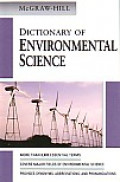
McGraw-Hill Dictionary of Environmental Science
Written in clear, simple language understandable to the general readar, yet in-depth enough for scientists, educators, and advanced students, the McGraw-Hill Dictionary of Environmental Science con…
- Edisi
- Ed. 1, Cet. 1
- ISBN/ISSN
- 0-07-142177-7
- Deskripsi Fisik
- xii, 490 hal.; 13,5 X 21 cm.
- Judul Seri
- -
- No. Panggil
- R 333.703 MCG d
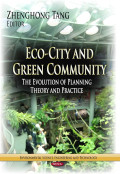
Eco-City and Green Community The Evolution of Planning Theory and Practice
In the 21st century, urban planners are faced with many new challenges which include climate change, ecosystem degradation, loss of biodiversity, community vulnerability, and social inequalities. T…
- Edisi
- Ed. 1, cet. 1
- ISBN/ISSN
- 978-1-62417-983-9
- Deskripsi Fisik
- viii, 193 hal.; ilus.; 17,8 x 25,4 cm.; indeks.
- Judul Seri
- -
- No. Panggil
- 696 TAN e
 Karya Umum
Karya Umum  Filsafat
Filsafat  Agama
Agama  Ilmu-ilmu Sosial
Ilmu-ilmu Sosial  Bahasa
Bahasa  Ilmu-ilmu Murni
Ilmu-ilmu Murni  Ilmu-ilmu Terapan
Ilmu-ilmu Terapan  Kesenian, Hiburan, dan Olahraga
Kesenian, Hiburan, dan Olahraga  Kesusastraan
Kesusastraan  Geografi dan Sejarah
Geografi dan Sejarah